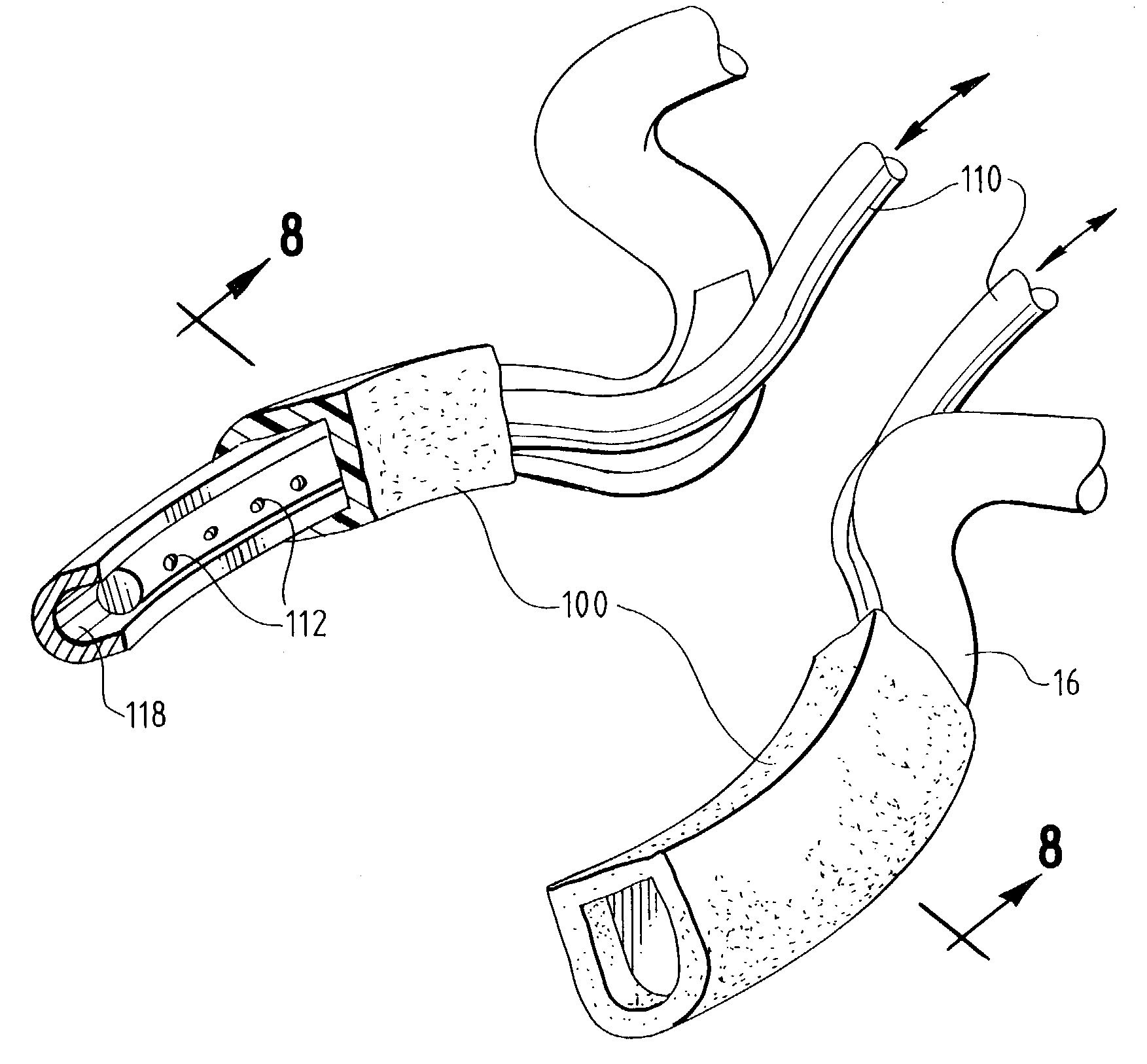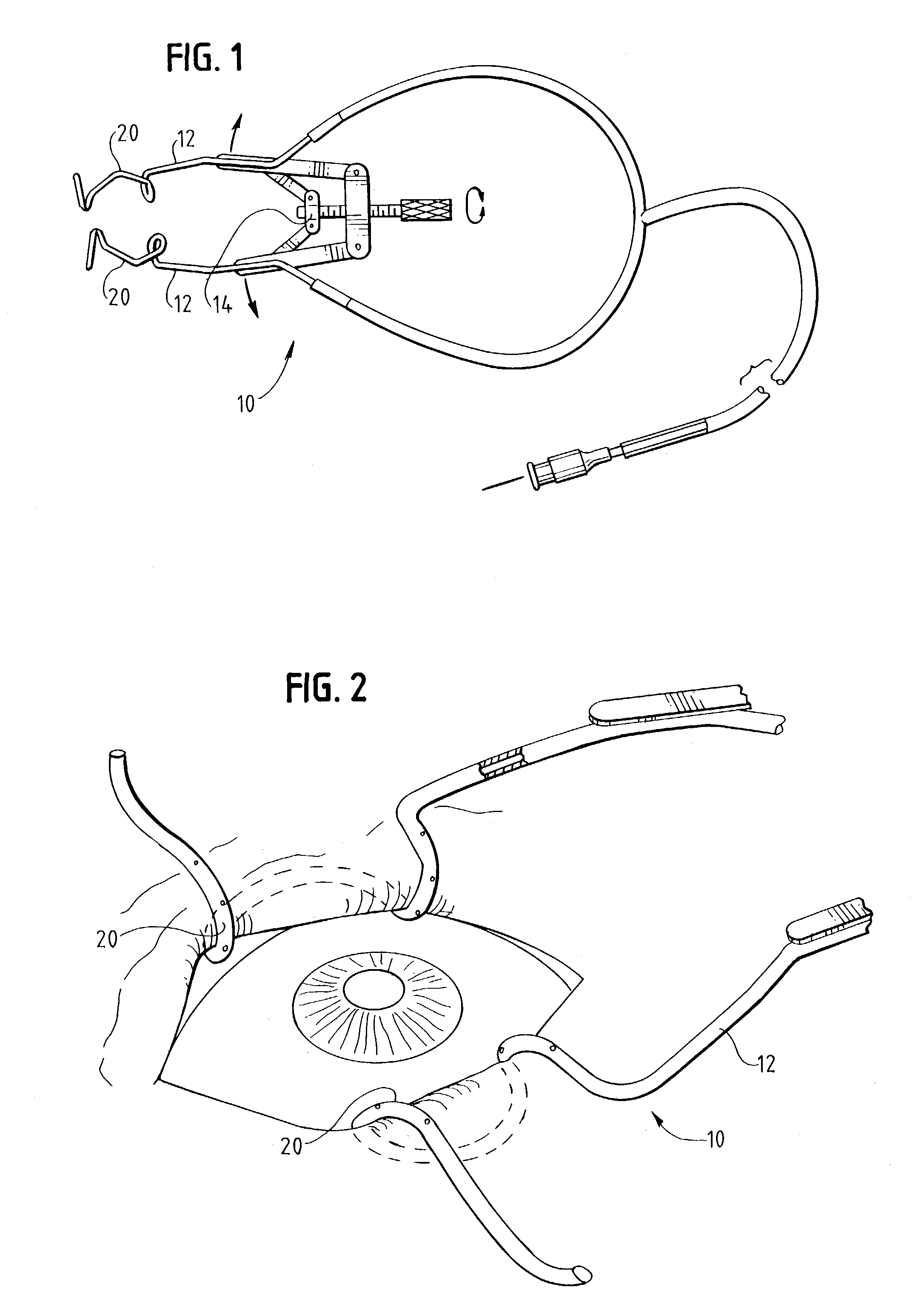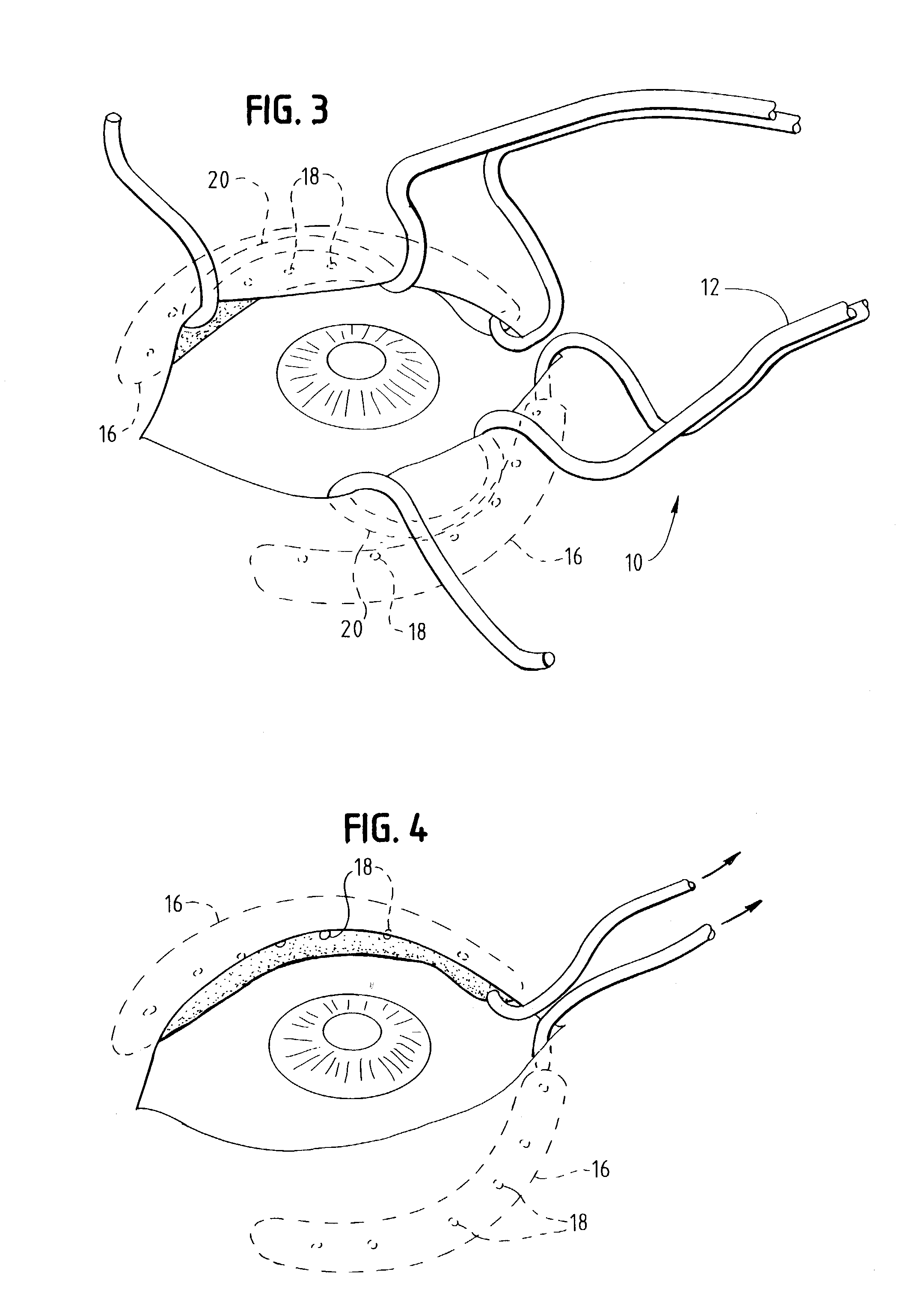Ophthalmic sulcus speculum
a sulcus speculum and ophthalmology technology, applied in the field of ophthalmology devices, can solve the problems of limiting the distance that the lid can be retracted, limiting the working area and visibility, and “squaring” the view
- Summary
- Abstract
- Description
- Claims
- Application Information
AI Technical Summary
Benefits of technology
Problems solved by technology
Method used
Image
Examples
Embodiment Construction
)
[0028]FIGS. 1 and 2 depict a conventional wire speculum 10, which is used to access the eye during ophthalmic procedures by spreading the lids. The speculums depicted in FIGS. 1 and 2 employ a wire or blade to wrap around the eyelid margin several millimeters near the midpoint to spread the eyelids, thereby exposing the ocular surface.
[0029]An embodiment of the present sulcus speculum is shown in FIG. 3 and includes a speculum 10. The speculum 10 includes a pair of arms 12 and can include a mechanism 14 for spreading the arms apart. At least one of the pair of arms 12 has a portion with a shape adapted for reaching under the eyelid of a patient to the sulcus. The arm portion with that shape will be referred to as the sulcus arm portion 16. In some embodiments the sulcus arm portion 16 can help hold the eyelid open during ophthalmic procedures.
[0030]As shown in FIG. 3, the sulcus arm portion 16 can have a hole or holes 18 for receiving fluid from the sulcus or for delivering drugs t...
PUM
 Login to View More
Login to View More Abstract
Description
Claims
Application Information
 Login to View More
Login to View More - R&D
- Intellectual Property
- Life Sciences
- Materials
- Tech Scout
- Unparalleled Data Quality
- Higher Quality Content
- 60% Fewer Hallucinations
Browse by: Latest US Patents, China's latest patents, Technical Efficacy Thesaurus, Application Domain, Technology Topic, Popular Technical Reports.
© 2025 PatSnap. All rights reserved.Legal|Privacy policy|Modern Slavery Act Transparency Statement|Sitemap|About US| Contact US: help@patsnap.com



